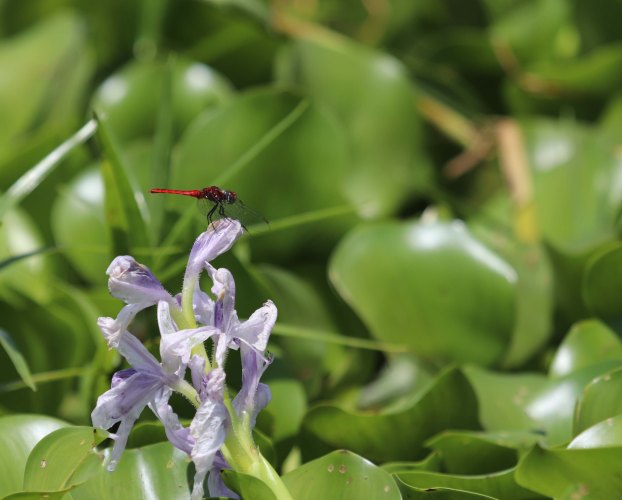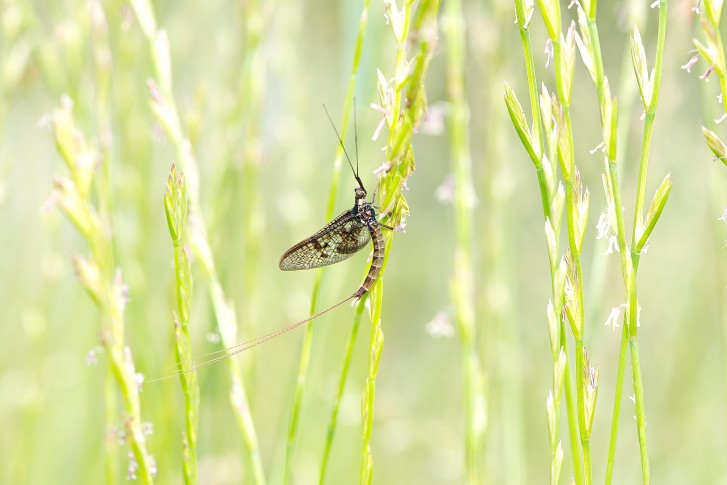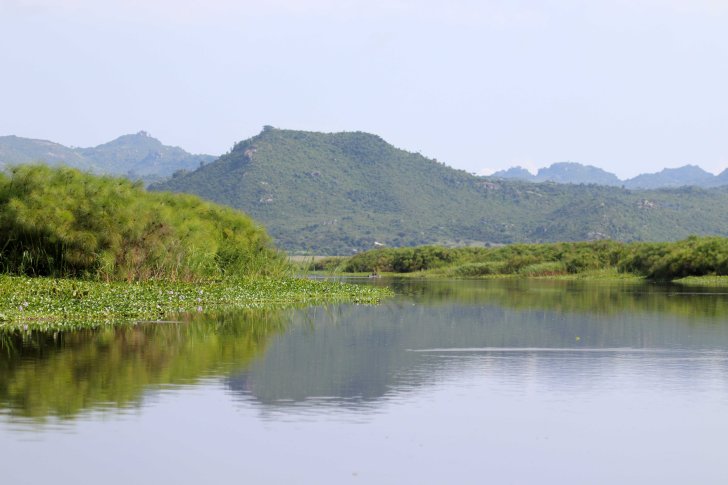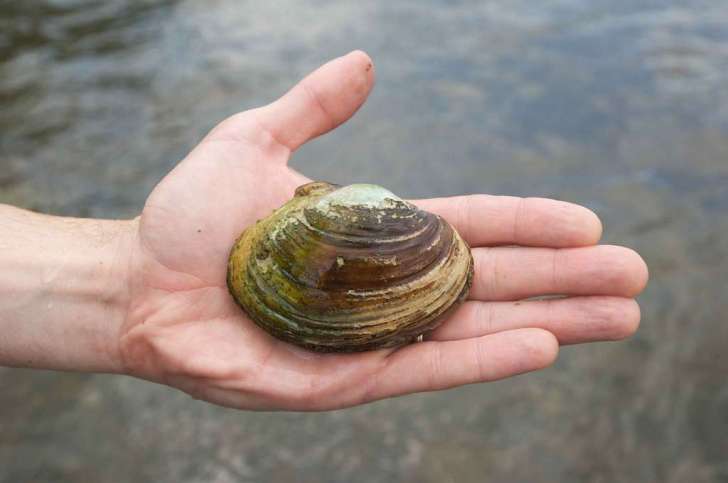Assessing the State of Freshwater Biodiversity Monitoring: A Global Perspective

A guest post by Monika Böhm, Freshwater Conservation Coordinator, Global Center for Species Survival, Indianapolis Zoo
///
Freshwater ecosystems play a vital role in sustaining biodiversity and supporting human livelihoods. They are also under immense pressure: for example, the WWF Living Planet Report shows that vertebrate populations are declining more rapidly in freshwater ecosystems than in terrestrial and marine systems!
Critically, major international biodiversity agreements – agreements aimed at stemming the loss of species, populations and ecosystems – are also focusing on halting freshwater declines. We need to be able to monitor progress towards the targets set by these biodiversity agreements to evaluate if they are successful in achieving their aims. However, effective monitoring of freshwater ecosystems still lags behind monitoring of terrestrial systems, and is often not carried out in a coordinated manner across regions and countries.
This is where the Global Freshwater Macroinvertebrate Sampling Protocols Task Force (GLOSAM) comes in. This group – which operates under the umbrella of the International Union for the Conservation of Nature (IUCN) Species Survival Commission (SSC) – has recently published a first and important review of the current state of freshwater biodiversity monitoring programs, focusing on the use of benthic macroinvertebrates as indicators.

What are benthic macroinvertebrates?
Benthic macroinvertebrates are aquatic invertebrates (animals without a backbone) that are large enough to see without a microscope: think worms, molluscs (snails and mussels), crustaceans, and the larvae of aquatic insects such as stoneflies, mayflies, caddisflies or dragonflies. ‘Benthic’ refers to the association of these animals with the bottom of a water body.
Why monitor benthic macroinvertebrates?
By monitoring freshwater macroinvertebrates such as insects, crustaceans, molluscs, and worms, scientists and conservationists can also monitor freshwater health. The presence and abundance of these species provide key information on the status of freshwater ecosystems in relation to human-made threats. Insights from such monitoring allows us to make smarter decisions in freshwater management.
Macroinvertebrates are great for monitoring because they have limited movement or are in some cases even sessile, and are therefore great indicators of the localised conditions they are “stuck in”. They cover a range of species and higher taxa that not only reflect a range of positions in the food web, but also different pollution tolerances. Through their positions in the food web, they serve as a major food source for many fish.
On a more pragmatic level, macroinvertebrates can be abundant in most streams, including those that may be too small to support many fish. They are relatively easy to sample, requiring few people and inexpensive gear, and they are relatively easy to identify to more coarse taxonomic levels, so any experienced general biologist should be able to use these animals to detect or recognise degraded conditions.

Benthic macroinvertebrate sampling protocols – a study
Protocols using benthic macroinvertebrates exist for both bioassessment and biodiversity monitoring. While bioassessment and biodiversity monitoring sound similar, they are not the same. Bioassessments aim to evaluate the status and/or condition of a waterbody by sampling and analysing a representative subset of macroinvertebrates.
Biodiversity monitoring tries to document the full variety of biota in ecosystems, from a system’s genetic diversity and species diversity to its ecological and functional diversity. Ultimately, biodiversity monitoring aims to assess trends in the ecosystem’s diversity. So there is overlap between bioassessment and biodiversity monitoring, including in the design and techniques used, but they have traditionally been carried out separately.
To find out about the uptake of freshwater benthic macroinvertebrate protocols by practitioners across the globe, the team conducted a comprehensive survey from the end of 2022 to mid–2023. Overall, 110 individuals from 67 countries participated in the survey.
From the survey data, the GLOSAM team, led by Drs. John Simaika (IHE Delft) and Andreas Bruder (SUSPI) and comprised of a core group of 15 researchers, government officials and NGO representatives from around the globe, identified a notable gap in biodiversity monitoring efforts at the national and sub-national levels: while bioassessment programs were more prevalent, there was a lack of systematic biodiversity monitoring across lakes, rivers, and artificial waterbodies.

Ultimately, GLOSAM’s work is to achieve the harmonisation and standardisation of bioassessment and biodiversity monitoring protocols, to ensure that our freshwater sampling efforts achieve the best value for all, including for our freshwaters. From the survey data, the team identified several distinct gaps and challenges that we must address to ensure that biodiversity monitoring and bioassessment protocols are well aligned.
For example, while protocols for biodiversity monitoring require us to sample across different water bodies, habitats, and seasons to get as full an inventory of biodiversity as possible, protocols for bioassessments stipulate that similar water bodies, habitats and seasons are sampled for the most meaningful results.
Other examples include the inherently different taxonomic resolutions at which the two processes of bioassessment and biodiversity monitoring operate. There are also some challenges that apply equally to both biodiversity monitoring and bioassessment, for example that data may often not be made publicly available or may not be in an accessible form and hence not available for analyses.
Probably most notably, the lack of harmonisation of sampling protocols emerged as a significant barrier to collaboration and comparability of data across regions. Given that the ultimate aim is to ensure efficient and effective sampling is carried out that produces the best possible data to track progress towards international biodiversity targets, overcoming this challenge is of the utmost importance.
Following this initial survey effort of sampling protocols, GLOSAM’s next step is to address this issue: to improve available datasets that can give us insights into species distributions and population sizes over space and time, and to give us a better understanding of the impacts that human activities have on freshwater ecosystems and their macroinvertebrate inhabitants.
Dr Simaika says: “Efforts to monitor and assess the health of freshwater ecosystems are critical for conservation and sustainable management. By addressing the identified gaps and challenges and promoting global harmonization, we can enhance the effectiveness of biodiversity monitoring programs and ensure the long-term resilience of freshwater ecosystems. Collaborative initiatives such as GLOSAM provide a pathway towards achieving these goals and safeguarding the invaluable biodiversity found within freshwater habitats.”
///
To learn more about GLOSAM, its goals, activities, members and partners, visit the Task Force’s website.






Comments are closed.